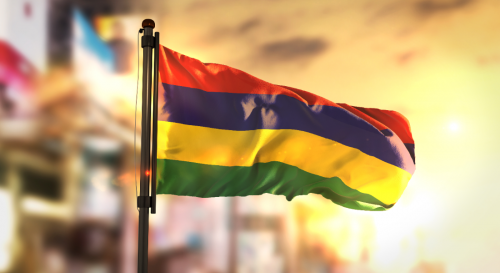
Sao Tome and Príncipe – tips to manage trademark portfolios during covid-19
Every financial year, applicants settle a budget for their trademark portfolio, which involves examining expenses for new applications and maintaining existing rights, prosecution, litigation, and disbursements, among other things. With the covid-19 pandemic, many rights holders are facing unprecedented financial difficulties, which makes them more conscious of costs. This in turn is leading to a more considered analysis of assets that are deemed to be crucial and worth keeping.
Below are some tips to minimise trademark portfolio costs in Sao Tome and Príncipe.
- Redo the budget for the current year and the years to come
Although the trademark grant fee is paid when the application is filed, there can be extra expenses on top of this (eg, recording changes of name or address, assignments and licences of use, among other things). It is therefore recommended to anticipate these extra costs when rethinking the trademark portfolio budget.
- List the trademarks in the portfolio
Ascertaining the assets held is a crucial part of portfolio management. Make a detailed list of the marks in the portfolio in order to develop a strategy for the ones that are worth maintaining.
- Analyse the portfolio and decide which rights are worth keeping
It is important to develop a strategy, which means knowing the countries that are important for the business and the marks that require protection based on this. Focus on strong marks (ie, logo, word or older logo) and eliminate redundant or outdated registrations and classes.
- Prioritise trademarks with renewals falling in 2020
A trademark renewal extends protection by 10 years and is therefore a financial commitment that will have effects until 2030. However, the grace period for renewals may be used to the mark owner’s advantage. In Sao Tome, the grace period to renew a mark is six months, which can be crucial since it gives applicants the opportunity to postpone renewal until 2021. For instance, a trademark with renewal due in July 2020 can still be paid in January 2021 by means of a surcharge, which is 50% of the fee due. However, since it would be paid the following year, it is an option for reducing application costs in 2020 while keeping the registration in force.
- File national and strong marks for a smooth registration process
Trademarks may be protected nationally or regionally through the African Regional IP Organisation (the Banjul Protocol) or internationally via WIPO (the Madrid Protocol). If a company’s strategy involves filing new applications, the national route is recommended. This is because the region’s IP Code is not well suited to both regional and international registrations – handling international and regional trademarks in the same section and applying the same set of rules to both systems can lead to problematic situations, such as the duplication of opposition proceedings at regional and national level for the same trademark or delayed examination procedures that surpass the limits set forth by the treaties. This can make the enforcement of regional and international trademarks unclear.
From a cost point of view, protecting trademarks that are more clearly distinctive (ie, avoiding descriptive elements) is generally cheaper than doing so for weaker marks. Trademarks with high level of descriptiveness are more susceptible to objections, which can be an increased financial burden.
- Conduct availability searches
Before filing an application, it is crucial to conduct an availability search. Here, the legal opinion of a trademark attorney is highly recommended, as they can advise applicants whether to proceed with the filing or to save costs with applications that are unlikely to be granted and therefore not worth investment.
- Avoid late filing costs
Before filing new applications, take some time and gather all the supporting documentation in order to avoid unnecessary late filing fees and any delays to registration.
- Grant licences of use
To generate income, licences of use may be an option for trademark owners. However, it is important for licensors to control how the agreement is implemented by the licensee, especially with regard to how the mark is used, otherwise the registration may be open to non-use cancellation.
- Use external resources to the fullest and seek help to manage your portfolio
For better and more time-efficient portfolio management, it may be worth making just one IP attorney responsible if possible, so that all assets are duly docketed, monitored and under constant surveillance.
This is a co-published article, which was originally published in the World Trademark Review (WTR).
Lista de Territórios
Não existem resultados para a sua pesquisa.
- África
- África do Sul
- Angola
- Argélia
- Benin
- Botsuana
- Burkina Faso
- Burundi
- Cabo Verde
- Camarões
- Chade
- Comores
- Costa do Marfim
- Djibuti
- Egito
- Eritreia
- Eswatini (Suazilândia)
- Etiópia
- Gabão
- Gâmbia
- Gana
- Guiné
- Guiné-Bissau
- Guiné-Equatorial
- Lesoto
- Libéria
- Libia
- Madagáscar
- Maiote
- Malaui
- Máli
- Marrocos
- Maurícias
- Mauritânia
- Moçambique
- Namíbia
- Níger
- Nigéria
- Quénia
- República Centro-Africana
- República Democrática do Congo
- República do Congo
- Reunião
- Ruanda
- Saara Ocidental
- São Tomé e Principe
- Seicheles
- Senegal
- Serra Leoa
- Somália
- Sudão
- Sudão do Sul
- Tanzânia
- Togo
- Tunísia
- Uganda
- Zâmbia
- Zanzibar
- Zimbábue
- África (OAPI)
- África (ARIPO)
- Mais Territórios
- Macau
- Maldivas
- Portugal
- Timor Leste
- Marca da União Europeia (EUIPO)
- Marca Internacional (Sistema de Madrid)
- Patente Europeia (IEP)
- Tratado de Cooperação em matéria de Patentes (PCT)




